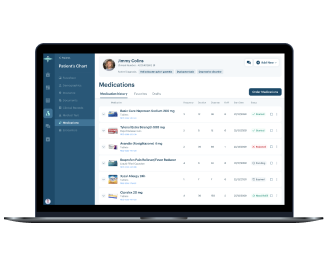Business and design consultancy for a mental health company
Find out how we helped a mental health service provider roadmap the implementation of a custom practice management system and prepare the ground for the development of user-centric software.
-
industry
Healthcare
-
Country
USA
-
Team size
5+
-
Implementation
3 months
About the client
Our client is a mental health organization that has been delivering psychotherapy services for more than 30 years. The company’s therapists provide cognitive behavioral therapy and ketamine therapy to treat mental health conditions such as anxiety disorders and depression. The company also creates lots of educational content for their blog and podcast to spread the word about the importance of mental health.

Business context
The client came to Yalantis with the need to develop a custom MVP version of their practice management system. It had to be integrated with a third-party EHR system and other services and tools for simplified session scheduling and e-prescription management. We worked closely with the client for three months to gather all the necessary business data, prioritize requirements, and prepare detailed project and design specifications and the MVP development roadmap. This thorough approach helped our client seamlessly complete the development stage and decrease the product’s time to market.
Solution overview
-
To prepare a solid foundation for solution development, we delivered a range of elaborate business and design artifacts.
As-is business state analysis
We gathered information about the client’s business, core processes, software solutions and their users, and the general flow of patient care delivery. Based on this information, we developed a granular map that reflected the full business operations lifecycle. This artifact included a breakdown of manual and digital processes to highlight areas for potential automation and digitalization.
-
Stakeholder interviews
To gather the client’s expectations and requirements for practice management software development, we conducted interviews with all critical stakeholders and identified the following:
- Critical user roles to include (patient, clinician, manager, front desk administrator, and business owner)
- Desirable user flow for the system
- Operational routine and processes for automation
- Core features to include (e.g. view patient data, send it to a prescriber)
We carefully documented all requests, critical needs, and functional and non-functional requirements to provide sufficient information for the software development team.
-
UX survey among system users
We prepared a UX survey to find out issues and inconveniences users faced with existing software and their expectations of the new system. Based on users’ feedback, we created an in-depth UX map to make sure we created a user-centric and convenient user experience. The UX map comprised:
- Features that users found problematic or unimportant in existing solutions
- Features that users considered well-functioning and necessary in existing solutions
- Ideas on how software could improve users’ daily work and which daily routines users would like to automate or digitize
These findings helped us come up with an optimal UX flow and describe the main user personas of the practice management system. Plus, we provided the client with UX wireframes and mockups to grasp the general system structure and design specifics. We also discussed users’ feedback with the client and jointly reviewed the features to add or avoid in the complete system prototype.
-
Estimation of project costs and future software maintenance
Once we elaborated project specifications, the client’s requirements, and the UX map, we provided the client with an accurate project breakdown and estimate.
We also performed an approximate estimate of future software maintenance so that the client could prepare and budget beforehand. Once we agreed with the client on the project estimate, we proceeded to the development phase.
Value delivered
Our cooperation during the three-month discovery phase resulted in:
-
Detailed project documentation with milestones and an accurate estimate
-
UX map with precise descriptions of user personas, their core needs, as well as market trends and comparison with competitors
-
Project presentations and other materials for the client to demonstrate the solution to stakeholders and engage investors early on
-
A seamless software development process that didn’t require much of the client’s input or supervision
Develop digital healthcare solutions that align with your business needs
Get a detail-oriented approach to business analysis and project discovery to ensure obstacle-free software development


